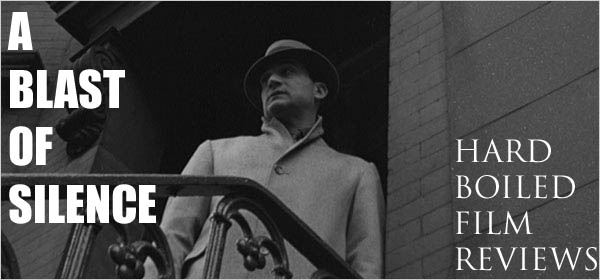
When communism was a threat to the United States in the 1950’s one of the outcomes was the Hollywood blacklist. The list consisted of actors, directors, producers, screenwriters, and other U.S. entertainers that were barred from work in the U.S. due to their suspected associations to the American Communist Party.
One name that stands out to me among the accused is film director Jules Dassin. Dassin, born in Middletown, CT, was forced to leave the U.S. in 1950 when he was accused of being tied to communism. Dassin was only briefly associated with the communist party in America but left in 1939.
Before Dassin was forced out of America he made his early mark on film. I consider Dassin’s stretch of four films in four years to be one of the most impressive bodies of work in the film noir genre. From 1947 to 1950 Dassin created four pictures worthy of extreme critical acclaim. “Brute Force”, the 1947 prison film noir drama set the bar for prison films. This tense, shocking and suffocated drama that starred Burt Lancaster plays heavy on emotion. Films like “The Shawshank Redemption” that our modern society celebrates undoubtedly learned a lot from Dassin’s landmark film.
In 1948 Dassin brought film noir right to the streets of New York City with “The Naked City”. It was one of the first police dramas or film noirs shot on location in New York City leading to its extreme authenticity and lending to the film’s almost documentary-like style. The film also features one of the most clever film noir voiceovers. Dassin employs a unique third person voiceover that acts like the king of the city, talking to all characters involved. “City” is truly a testament to New York and an absolutely stunning time capsule of the era.
The final two American films made by Dassin were “Thieves’ Highway” and the film noir “Night and the City”. This may sound strange but “Highway” is the most intense film about apple hauling and dealing you’ll ever see. On the inside of “Highway” is a dark and grim world, far darker than one might imagine considering the subject matter. “Night and the City”, on the other hand, is a film noir set in London. Much like “Naked City”, Dassin filmed this one on location as well. The film follows around an ambitious small time gangster trying to rise to the top of the crime syndicate. The lead is played by Richard Widmark and is one of the greatest performances in his heralded career as he perfectly plays the clever and scheming gangster.
When Dassin was forced to flee to France following “Night and the City” he didn’t stop creating gems. Five years after “Night and the City”, Dassin made what many agree to be his masterpiece, the heist film noir “Rififi”. “Rififi” is best remembered for its legendary heist scene. It is a 32 minute scene without a single line of dialogue. To this day it still holds up among the tensest of all heist scenes. Dassin’s technique was highly influential and has been mimicked many times.
Jules Dassin is a truly remarkable figure who overcame everything that was thrown at him. When America forced him out he went to France and created a masterpiece. When he left Italy as an “undesirable” he went to Greece and became an icon. While I express the most interest in the five films of his I mentioned, his later works such as “Never on Sunday” and “Topkapi” are not to be ignored. Dassin’s life is an admirable one and his hard work should be seen and appreciated by all.




No comments:
Post a Comment